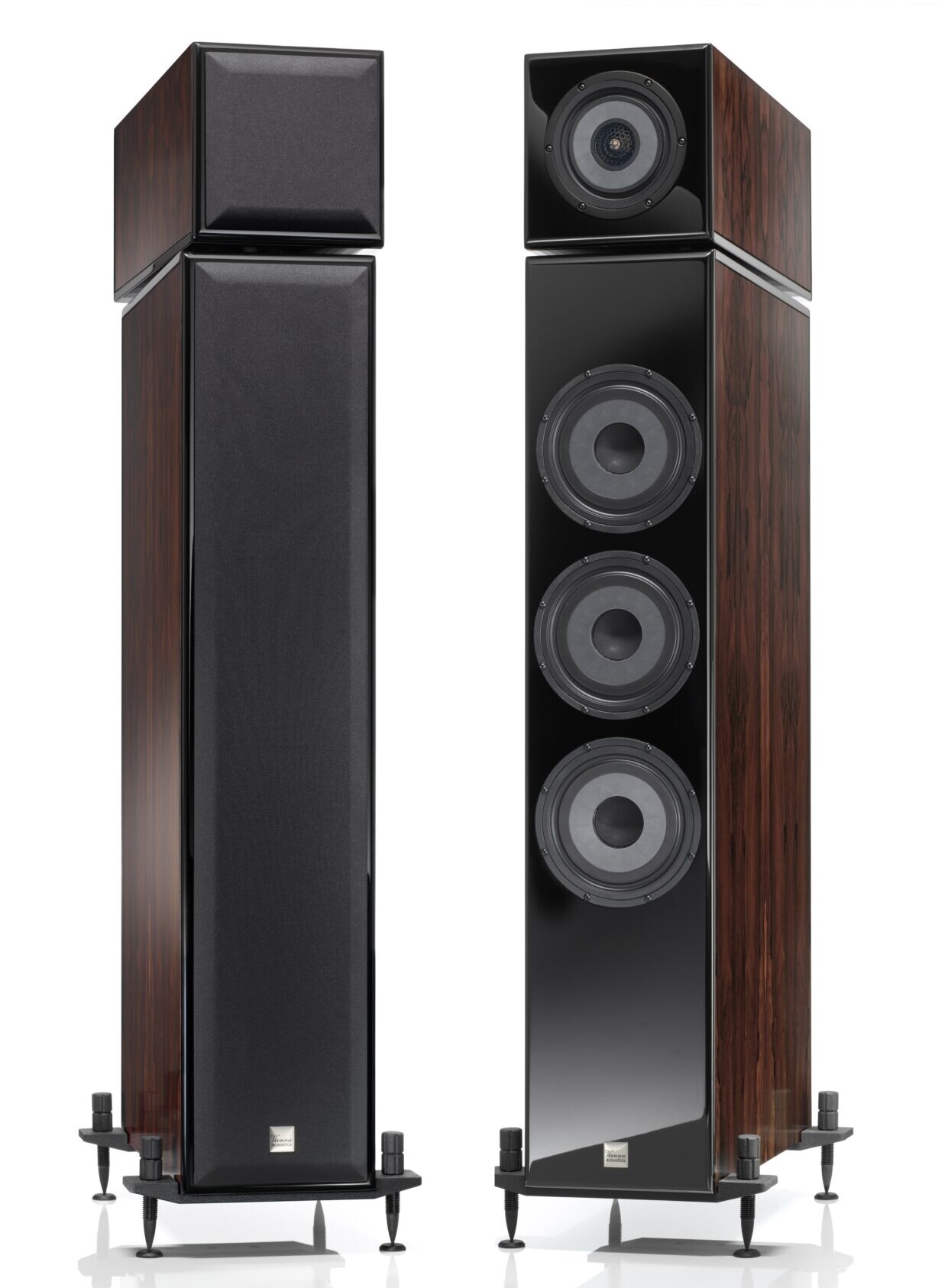The Vienna Acoustics Liszt Reference
By Roy Gregory

Vienna Acoustics has long ploughed its own, singular yet highly fertile furrow. Understated and often overlooked, the company has been quietly producing consistently musical and beautifully finished loudspeakers for several decades. If there is a more under-rated (and, at around €35K – a price that includes 20% sales tax – under-priced) loudspeaker on the market than Vienna’s flagship model, The Music, I want to know what it is! What’s more and despite the surprisingly affordable prices of their products, they still develop and use their own driver designs, a process that has culminated in the current range of flat-diaphragm, composite cone drivers: except that in this case, ‘composite’ is used in its true sense, referring to the use of mixed materials, rather than as shorthand for carbon-fibre. Those drivers first saw the light of day in the (third tier) Beethoven series, but their remarkable performance has mandated a swift revision of the higher end models, starting with the Liszt…
This is a physically distinctive design – to say the least. Like The Music, it involves a pivoting head that contains a dual-concentric mid/treble driver. In the flagship, that head allows users to rotate and tilt the midrange driver to achieve an ideal listening axis, a feature which, combined with the sloping front baffle, gives the speaker an elegant, slightly laid-back air. As befits its more affordable price point, the Liszt is both simpler and more upright. The baffle – indeed the entire cabinet – is resolutely vertical, while the head allows rotational movement only. Along with the narrower baffle and slimmer overall dimensions, the result is altogether more prim and proper, standing at attention rather than leaning with one elbow on a bar.
Remove the neat, magnetically attached grilles and you’ll find three 7” composite cone bass drivers, and a 6” midrange with a ¾” ‘ring radiator’ tweeter lodged in its throat. If the drivers look different, it’s because they are. The flat diaphragms are moulded from X4P, Vienna’s fourth generation polypropylene blend, the planar surface supported by carefully profiled and tapered radial buttresses, fully 18mm deep in the case of the bass drivers. This complex and precisely calculated form is unique, dubbed ‘spider cone’ by VA due to its array of ‘legs’. Earlier iterations with transparent cones allowed you to view the stiffening ribs, but the composite cones offer up an opaque, grey face to the world. The carefully formulated, proprietary material and construction extend the benefits of polypropylene’s mechanical stability and self-damping while offering a light and incredibly rigid structure, carefully optimised for the driver’s intended pass-band. The centre of each low-frequency driver’s diaphragm takes the form of a soft, inverted, treated fabric dome. This offers smooth extension while limiting cone break-up and out-of-band artefacts. The midrange driver’s diaphragm is also moulded from X4P, but is smaller, thinner and lighter as befits its function, both the diaphragm and buttresses of the ‘spider cone’ using mid-band optimized profiles.

